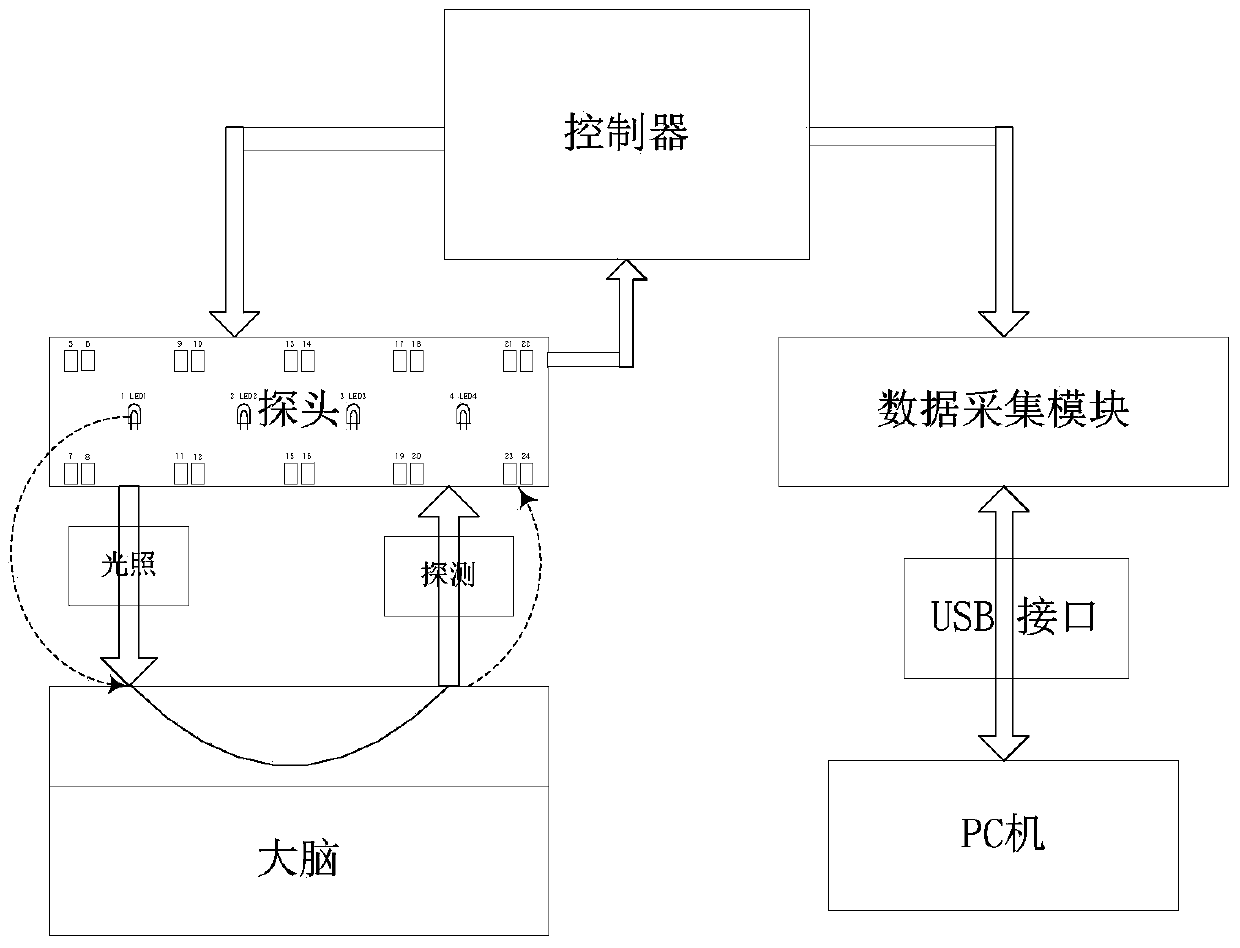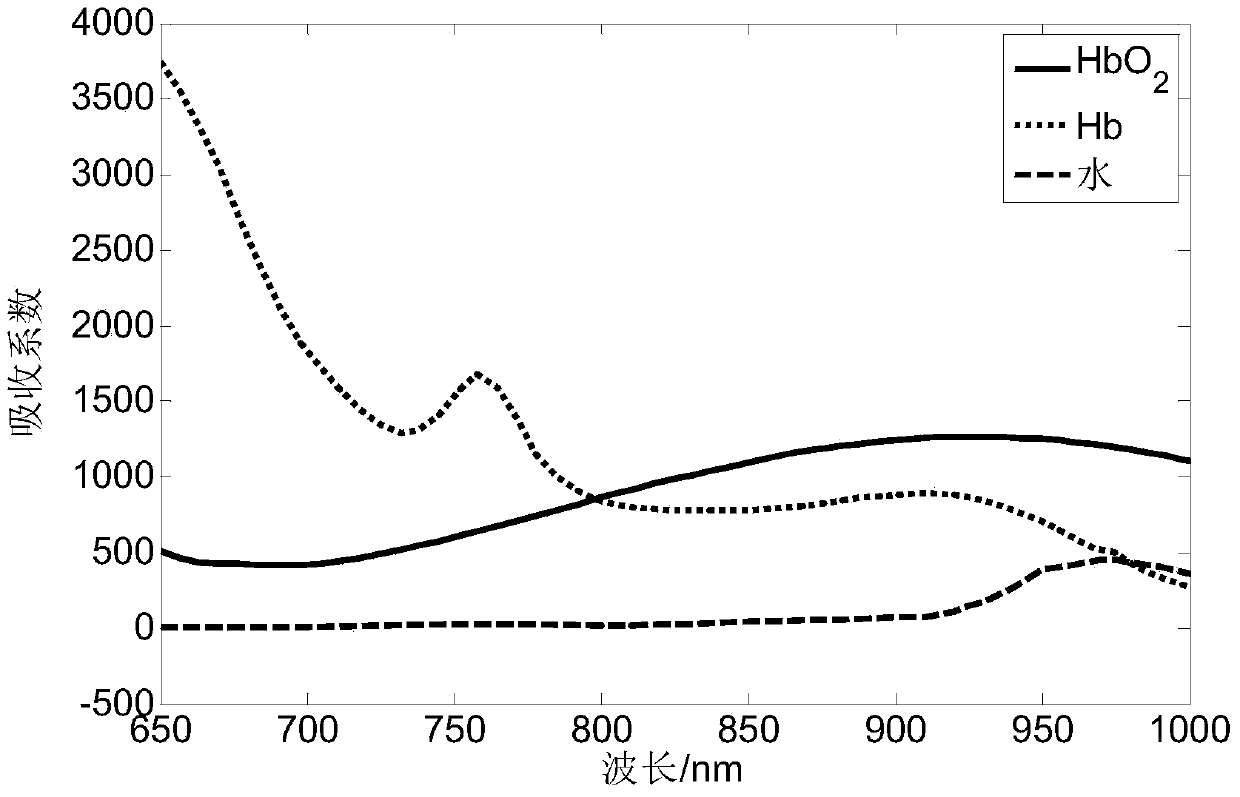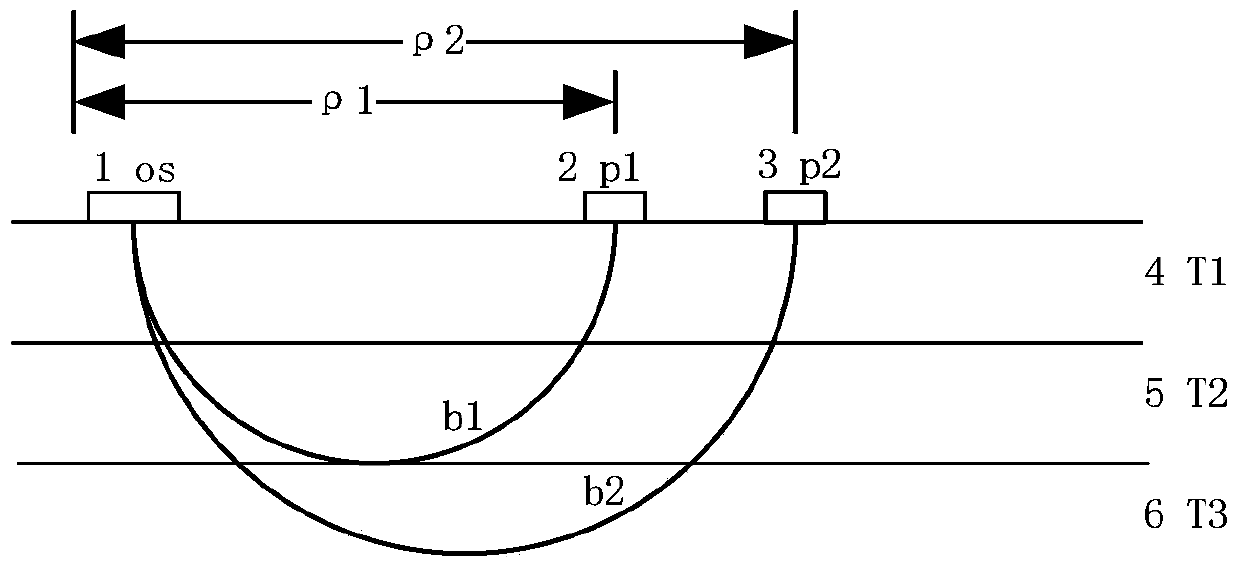Device and method for detecting absolute amount of blood oxygen saturation of local brain tissue
A detection device and brain tissue technology, applied in the field of biomedical engineering, can solve problems such as the inability to measure absolute quantities and the inability to reflect the differences between patients and normal people, and achieve the effects of improving portability, signal stability, and easy methods
- Summary
- Abstract
- Description
- Claims
- Application Information
AI Technical Summary
Problems solved by technology
Method used
Image
Examples
Embodiment Construction
[0039] The present invention will be further described below in conjunction with the accompanying drawings and specific embodiments.
[0040] exist image 3 1 is the light source os (an LED that can emit at least three wavelengths of near-infrared light); 2 is the distance from the light source is ρ 1 The photosensitive detector p1; 3 is the distance ρ from the light source 2 The photosensitive detector p2 (two photosensitive detectors like 2 and 3 form a pair of photosensitive detector channels); 4 is the first layer of tissue, and is represented by T1; 5 is the second layer of tissue, and is represented by T2; 6 It is the third layer of organization and is represented by T3. We use this device to measure the absolute value of blood oxygen saturation in human brain tissue. Here, T1 is skin, T2 is skull and cerebrospinal fluid, and T3 is brain tissue (white and gray matter). b1 and b2 are the trajectory of the photon. By changing the distance between the light source and ...
PUM
 Login to View More
Login to View More Abstract
Description
Claims
Application Information
 Login to View More
Login to View More - R&D
- Intellectual Property
- Life Sciences
- Materials
- Tech Scout
- Unparalleled Data Quality
- Higher Quality Content
- 60% Fewer Hallucinations
Browse by: Latest US Patents, China's latest patents, Technical Efficacy Thesaurus, Application Domain, Technology Topic, Popular Technical Reports.
© 2025 PatSnap. All rights reserved.Legal|Privacy policy|Modern Slavery Act Transparency Statement|Sitemap|About US| Contact US: help@patsnap.com



